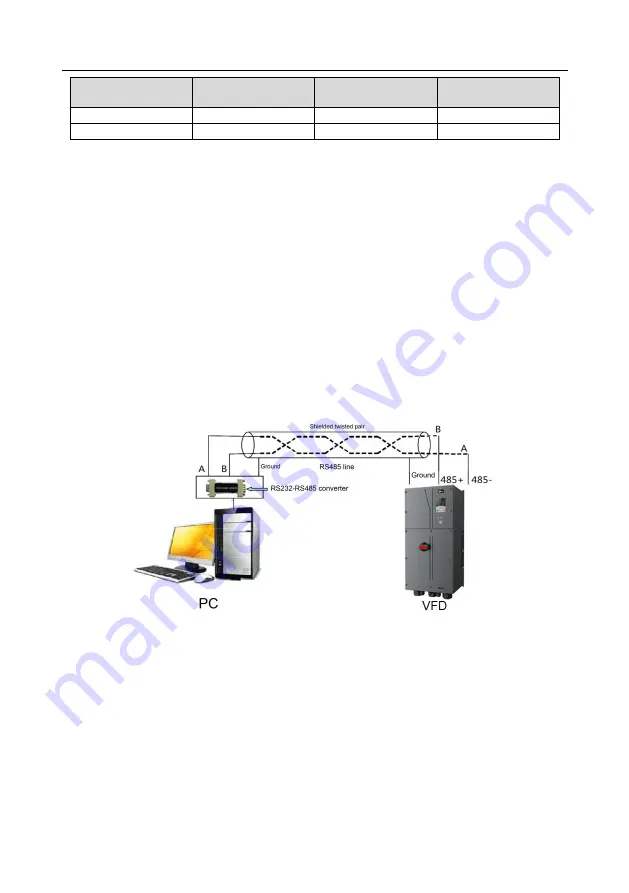
Goodrive350 IP55 High-ingress Protection Series VFD
Communication protocol
-272-
Baud rate (bps)
Max. transmission
distance
Baud rate (bps)
Max. transmission
distance
2400
1800 m
9600
800 m
4800
1200 m
19200
600 m
When RS485 interfaces are used for long-distance communication, it is recommended that
you use shielded cables, and use the shield layer as the ground wires.
When there are fewer devices and the transmission distance is short, the whole network works
well without terminal load resistors. The performance, however, degrades as the distance
increases. Therefore, it is recommended
that you use a 120 Ω terminal resistor when the
transmission distance is long.
9.3.1.1 Application to one VFD
Figure 9-1 is the Modbus wiring diagram of one VFD and a PC. Generally, PCs do not provide
RS485 interfaces, so you need to convert an RS232 interface or USB port of a PC to an
RS485 interface. Connect end A of the RS485 interface to the 485+ port on the terminal block
of the VFD, and connect end B to the 485- port. It is recommended that you use shielded
twisted pairs. When an RS232-RS485 converter is used, the cable used to connect the RS232
interface of the PC and the converter cannot be longer than 15 m. Use a short cable when
possible. It is recommended that you insert the converter directly into the PC. Similarly, when a
USB-RS485 converter is used, use a short cable when possible.
Figure 9-1 Wiring of RS485 applied to one VFD
9.3.1.2 Application to multiple VFDs
In practical application to multiple VFDs, chrysanthemum connection and star connection are
commonly used.
According to the requirements of the RS485 industrial bus standards, all the devices need to
be connected in chrysanthemum mode with one 120
Ω terminal resistor on each end, as
shown in Figure 9-2.
Figure 9-3 is the simplified wiring diagram, and Figure 9-4 is the practical application diagram.
















































